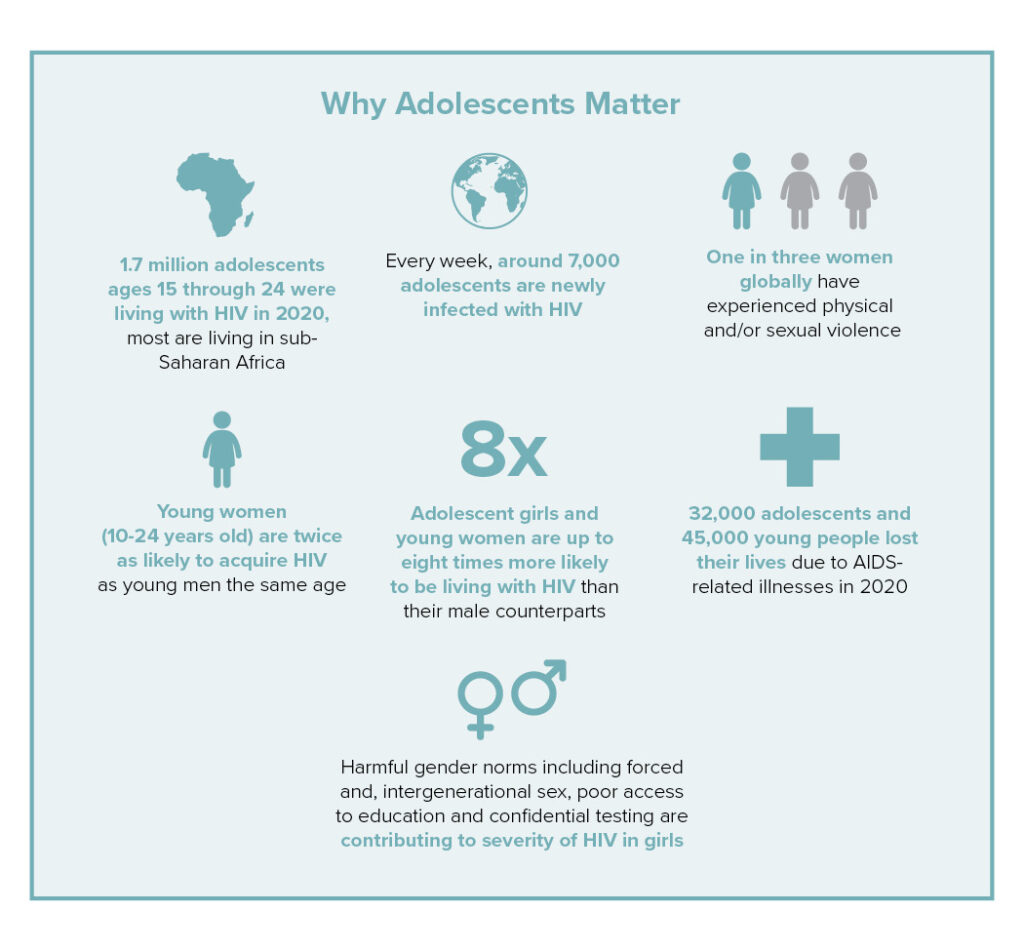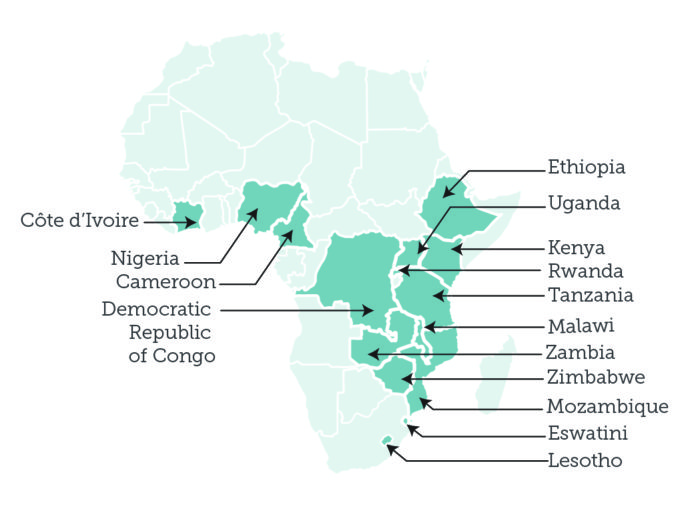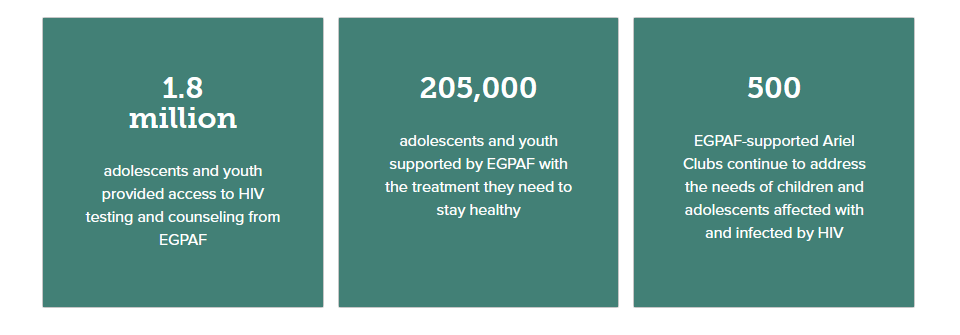As more HIV-positive children transition into adolescence and adulthood, there is concern that the HIV epidemic could be reignited. Designing programs focused on the needs of young adults is essential to ensuring they have the best opportunity to live long, healthy lives.

Our Work with Adolescents

SPAF is currently working in 15 countries to ensure that adolescents and young adults have access to the care they need. Across these countries, we execute global advocacy activities, implement HIV prevention, care, and treatment programs, and advance innovative research that can bring dramatic improvements to the lives of millions of youth. Through our work, diverse groups of adolescents have received HIV services, including girls and young women, orphans and vulnerable children, in-school adolescents, pregnant teens, and young couples.
These services include increased access to HIV education (school- and community-based, in addition to facility-driven), treatment (including access to second and third-line regimens), community support services to improve knowledge, empower youth populations and reduce effects of stigma.
We offer these services using various differentiated service delivery models, which customize health services to the needs of recipients. Some of these differentiated care strategies have included use of peer mentors to bolster treatment support (and use of age range–specific children’s and teen clubs), adolescent-specific rooms built within existing clinic settings, use of community health workers to bolster support to pregnant teens, and optimizing clinic times to align with school schedules and clinical status (for slow- versus fast-track services).
Much of this work has been informed by an entity developed by SPAF, the Committee of African Youth Advisors (CAYA) led by youth populations in these settings, which guides program decision making at SPAF. Committee members are youth who use their own knowledge and experience to inform programs that work for them and their peers. This innovation has been a major breakthrough in the way we protect, care for, treat, and empower a vulnerable and growing population living with HIV.
Outcomes

- Each annual quarter, SPAF programs support over 115,000 adolescents living with HIV in their care and treatment journey.
- Although viral load testing uptake is not where it should be, some of SPAF’s country programs are seeing incredible viral suppression rates; in Lesotho, for instance, 93% of 10- to 24-year-olds on treatment who received a viral load test were virally suppressed in 2019.
- Over 500 SPAF-supported Clubs continue to address the needs of children and adolescents affected by and infected with HIV, with updated tools and resources that facilitate conversations around safe sex and normalizing HIV infection.
- Thirteen countries are now represented within CAYA, which has, to date, contributed to a guide for health care workers to support adolescent HIV disclosure in various contexts, generated ideas to strengthen differentiated care, and collaborated on a cartoon discussion guide that explores adolescent HIV issues. All assets have been championed by country teams and are being actively used by SPAF and implementing partners.

